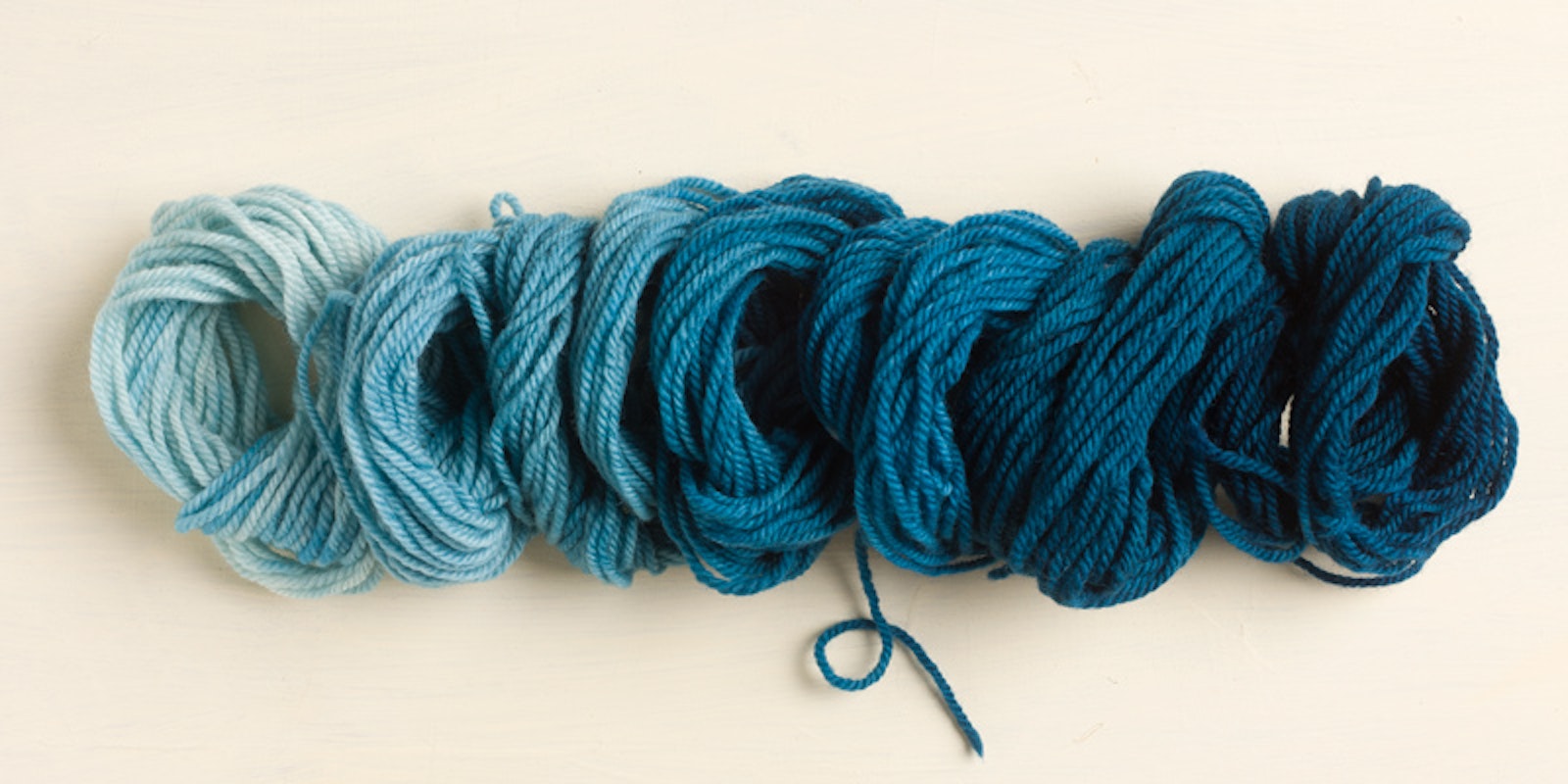One of my favorite parts of my job is learning from Linda Ligon. But when she had me order sulfuric acid so she could make Saxon blue, a historic indigo dye, I was dubious. “It will be easy,” she said—a classic Linda line.
About Indigo Dyes
Artisans around the world have used indigo dye for generations, as far back as 4000 BCE in Peru. Today’s indigo dyers can choose from natural fermentation vats and chemical reduction vats. Anything dipped in an indigo vat emerges green but turns blue in contact with oxygen.
Dagmar Klos dips a white cloth in an indigo vat, pulls out a green cloth, and watches it turn blue. Photo courtesy of Dagmar Klos
Saxon Blue
Linda had an idea for something that some might consider beyond the pale: she mixed, developed, and dyed with Saxon blue. Unlike the typical indigo vat (which is carefully treated through a natural or chemical sequence to remove oxygen), Saxon blue extract is made through a quick, exciting process. It requires 98% sulfuric acid, which we were allowed to buy only after demonstrating that we were upstanding citizens (and which I didn’t even get close to).
A few weeks after the acid and the indigo powder arrived, Linda came into the office with a video of herself mixing the Saxon blue solution. In the video, she is dressed from head to toe in protective covering (including a full face mask) while her husband, a scientist, supervised and recorded. She measures out ingredients using a professional-quality balance and beakers and narrates as she mixes them. (At one point you can hear her husband admonish, “Slowly!” from behind the camera.)
When the Saxon blue extract was finished, the result was a jar of no-fuss concentrate. She showed me how simple it was to use: We added a syringeful of extract to a pot of simmering water, then immersed a few skeins of yarn. After about ten minutes, the yarn emerged a beautiful dark, colorfast teal.
I can’t recommend making Saxon blue yourself, but I absolutely recommend watching Linda’s adventures. +


